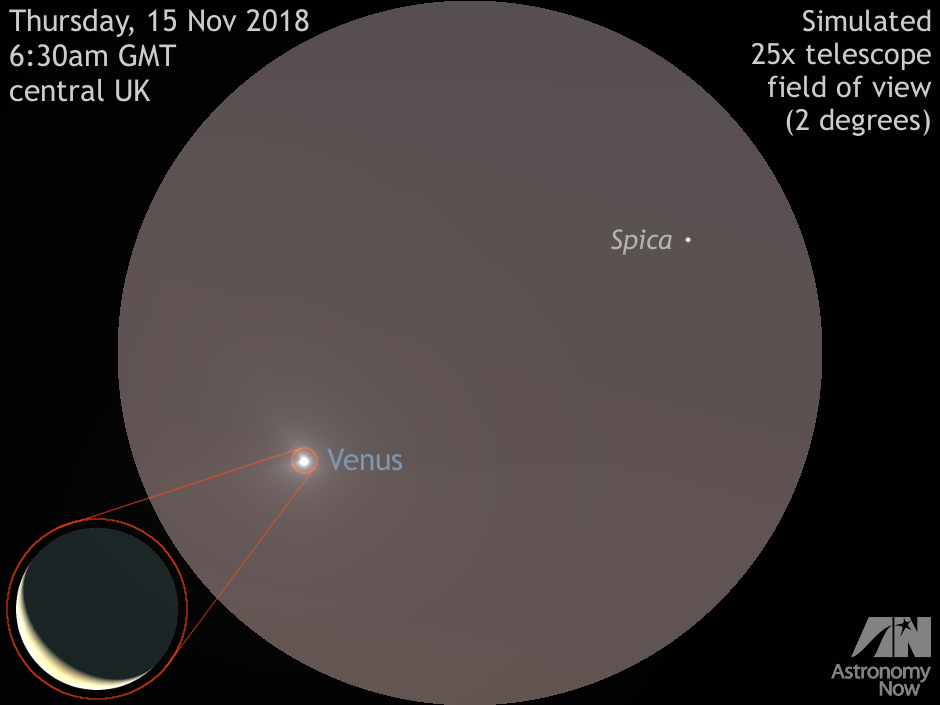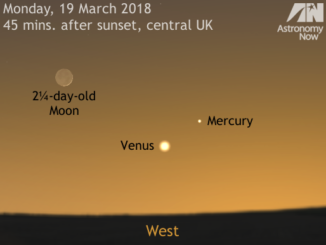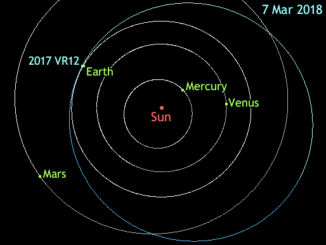
Presently the brightest object in the dawn sky, magnitude -4.5 Venus rises more than two hours before the Sun for observers in the British Isles and may be found in the constellation Virgo low in the southeast an hour before sunrise (hint: you can use our interactive online Almanac to calculate local times of events). If you look carefully before the twilight grows too bright, you may spot that the planet has company.
On the UK morning of Thursday, 15 November 2018 around 6:30am GMT, Venus lies just 1¼ degrees from first-magnitude star Spica, Virgo’s principal luminary. Viewed through a telescope at this time, Venus appears as an 11 percent illuminated crescent exceeding 52 arcseconds in diameter and lies 47.8 million kilometres (29.7 million miles) from Earth.
Owing to the planet’s large angular size this week, a typical 10x binocular is sufficient to glimpse Venus’ crescent. What’s the minimum optical aid with which you can see it? Tip: it helps to lean one’s elbows on a low fence or fall to steady the view. Note that between now and dawn on 20 November, Venus lies 2 degrees or less from Spica, so be sure to make the most of any early morning viewing opportunities.



